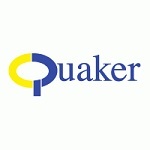An Intelligent Multiple Metalworking Fluid Application System




Is it just me or does Quaker Chemical need to spiff-up that boring-azz logo. The word and font are cool enough, but the "Q" in the circle looks like the international symbol for a uni-sex toilet.
 This is not an announcement of the next STLE Convention in Las Vegas. It is NOT in Las Vegas. It is in Detroit, where the only ride you will test drive is a Ford. This is about tramp oil. The STLE January Issue of the Metalworking Fluid Newsletter includes six articles related to metalworking fluids, including the 6C Metalworking Fluid Management article that first ap
This is not an announcement of the next STLE Convention in Las Vegas. It is NOT in Las Vegas. It is in Detroit, where the only ride you will test drive is a Ford. This is about tramp oil. The STLE January Issue of the Metalworking Fluid Newsletter includes six articles related to metalworking fluids, including the 6C Metalworking Fluid Management article that first ap

 To meet the challenges of Aerospace Industry with High Performance Fluids, Quaker Chemical introduces QUAKERCOOL® 7000 ALF BAF. A European approved machining and grinding coolant will now be available to the U.S. aerospace industry. QUAKERCOOL® 7000 ALF BAF is an environmentally friendly water soluble coolant designed for the machining of aluminum alloys and has new technology that is boron-free and amine-free.
To meet the challenges of Aerospace Industry with High Performance Fluids, Quaker Chemical introduces QUAKERCOOL® 7000 ALF BAF. A European approved machining and grinding coolant will now be available to the U.S. aerospace industry. QUAKERCOOL® 7000 ALF BAF is an environmentally friendly water soluble coolant designed for the machining of aluminum alloys and has new technology that is boron-free and amine-free.

 CIMCOOL Fluid Technology, a leader in metalworking fluids, introduces a new and complete product line designed to meet the challenges of the tube and pipe industry. CIMMILL™ Fluids, was formulated to increase productivity by up to 20% in tube and pipe operations, offer excellent lubricity, rust protection and sump life. For additional information visit www.CIMCOOL.com
CIMCOOL Fluid Technology, a leader in metalworking fluids, introduces a new and complete product line designed to meet the challenges of the tube and pipe industry. CIMMILL™ Fluids, was formulated to increase productivity by up to 20% in tube and pipe operations, offer excellent lubricity, rust protection and sump life. For additional information visit www.CIMCOOL.com
 Use of compressed air for cleaning machined components is a common practice. The potential impact of the use of compressed air for the removal of residual metalworking fluids on health was investigated using a test chamber approach followed by a workplace study. The greatest risk was found to be dermal exposure due to large droplets of MWF coating the worker’s torso and arms.
Use of compressed air for cleaning machined components is a common practice. The potential impact of the use of compressed air for the removal of residual metalworking fluids on health was investigated using a test chamber approach followed by a workplace study. The greatest risk was found to be dermal exposure due to large droplets of MWF coating the worker’s torso and arms.
